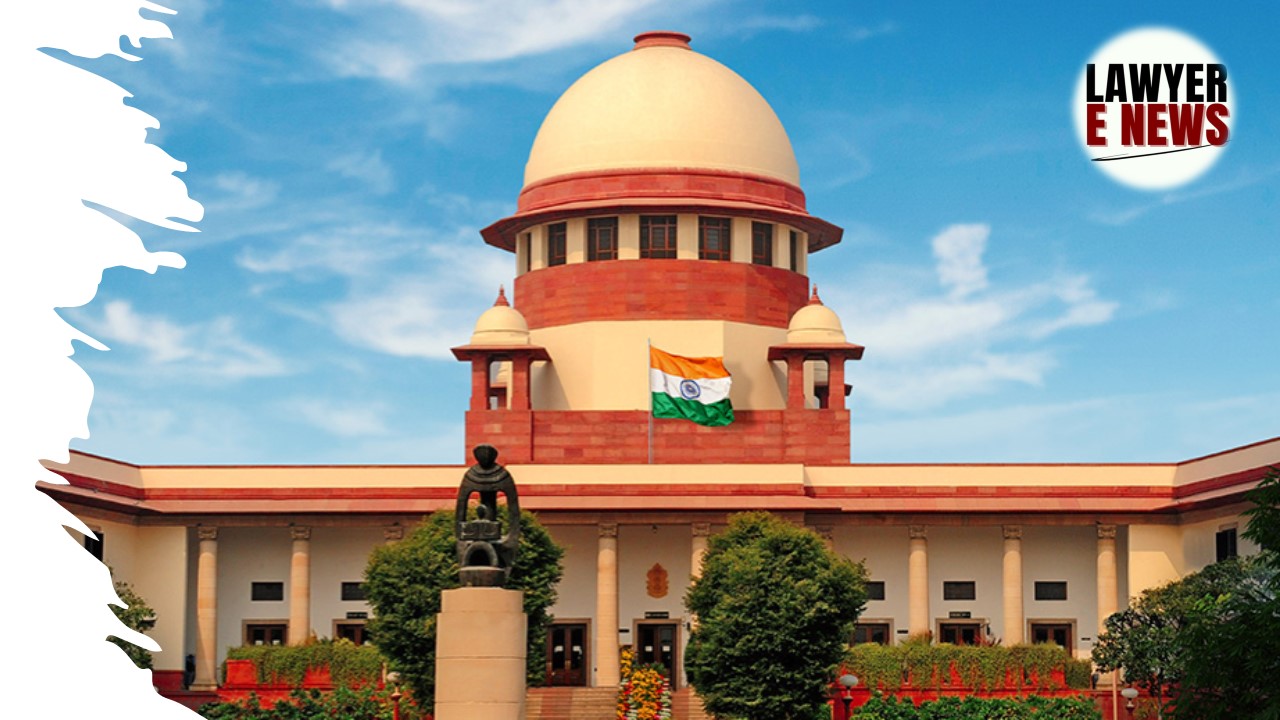-
by Admin
15 December 2025 3:42 AM



Supreme Court Bench comprising Justice C.T. Ravikumar and Justice Sanjay Kumar delivered a crucial verdict in the case of Manik & Ors. v. State of Maharashtra. The case involved the custodial torture and alleged death of a criminal, Shama @ Kalya, while in police custody in 1995. The Supreme Court set aside the convictions of several police officers under Section 304 Part II of the Indian Penal Code (IPC) for culpable homicide not amounting to murder, ruling that the prosecution had failed to prove that the exhumed body was Shama’s. However, the Court upheld convictions related to custodial torture under other IPC sections, including Sections 330, 348, and 387, sentencing the accused to one year of rigorous imprisonment.
In 1995, Shama @ Kalya, a history-sheeter, was detained illegally by the Gondia police in connection with a housebreaking incident. Allegedly subjected to third-degree interrogation methods, Shama died in custody. Later, an unidentified burnt body was discovered in a forest area near Tirodi Police Station, Madhya Pradesh. The prosecution argued that this body was that of Shama, and charged the officers involved under various sections of the IPC, including Section 304 Part II for culpable homicide, alongside other charges of custodial torture and destruction of evidence.
The Trial Court convicted the police officers under Section 304 Part II IPC for causing the death of Shama, along with other charges, and sentenced them to various prison terms. The officers were found guilty of wrongful confinement, use of third-degree methods, and attempting to cover up Shama’s death by staging his escape. While the High Court of Bombay, Nagpur Bench, upheld most of the convictions, it acquitted the officers of charges under Section 201 IPC (destruction of evidence) as it ruled that the prosecution had failed to conclusively prove the identity of the burnt body as Shama’s. Dissatisfied with the conviction, the officers approached the Supreme Court.
The central issue before the Supreme Court was whether the exhumed burnt body could be conclusively identified as Shama @ Kalya’s. The prosecution had relied on fingerprint evidence to establish the identity of the body. However, the Supreme Court ruled that the fingerprint evidence provided was unreliable and that the prosecution failed to offer a definitive identification. The Court noted, "The prosecution's reliance on the fingerprint evidence was based more on guesswork than conclusive proof." It also highlighted the failure of the investigating authorities to conduct a DNA test, which could have definitively established the body’s identity.
"Unless it is proved that the dead body was that of Shama @ Kalya, the evidence in relation to efforts made by the accused persons to mutilate the said body and destroy the evidence does not constitute proof of charge under Section 302 of the IPC," the Court held.
Given this failure, the Supreme Court granted the officers the benefit of doubt and acquitted them under Section 304 Part II IPC.
The Court found sufficient evidence to establish that Shama was indeed illegally detained and tortured by the accused officers. Multiple witnesses, including PW-1 (Amrutabai Ukey), the deceased’s wife, and PW-20 (a police officer), testified that Shama was severely injured while in custody. His wife, PW-1, stated that she saw Shama in custody bleeding from his legs and heard him say that the police had "cut his veins." This testimony, combined with corroborating evidence from police officers and medical staff who treated Shama during his detention, led the Court to uphold the convictions for custodial torture.
“The evidence proves that Shama was kept in illegal custody and subjected to third-degree methods while in police custody,” the Court noted, confirming the conviction under Sections 330 (voluntarily causing hurt to extort confession), 348 (wrongful confinement), and 387 (putting a person in fear of death) of the IPC.
The Supreme Court sentenced the officers to one year of rigorous imprisonment for these charges, along with fines.
The prosecution had alleged that the officers staged Shama’s escape from custody by enlisting another individual, PW-8 (Dipak Lokhande), to impersonate him and jump out of a moving police jeep. This was meant to create the false impression that Shama had escaped from police custody. PW-23 (a police officer) testified that entries in the police diary were manipulated to support this false escape theory. However, PW-8 turned hostile during the trial, and his testimony could not fully support the prosecution's case. Despite this, the Supreme Court found enough evidence to conclude that the officers concocted a false narrative to cover up the custodial death.
The defense argued that Shama was still alive after the alleged escape, producing a Railway Court order from Raipur that convicted one Shama for traveling without a ticket on January 7, 1996. The Supreme Court dismissed this defense as fabricated, noting the improbability that Shama, a fugitive, would appear in a Railway Court for such a minor offense. The Court found that this defense was part of the officers' attempt to create a misleading record about Shama's whereabouts after his supposed escape.
“This was an attempt by the officers to fabricate evidence and create an illusion of Shama’s continued existence,” the Court stated, rejecting the defense’s claims.
Justice Sanjay Kumar issued a dissenting opinion, disagreeing with the majority judgment’s acquittal of the officers under Section 304 Part II IPC. Justice Kumar argued that sufficient evidence existed to conclude that Shama had died in custody due to police brutality, even if the body’s identity could not be conclusively proven.
"Permitting the officers to escape conviction for custodial death simply because the body could not be conclusively identified allows those in power to evade justice," Justice Kumar stated, stressing that police accountability must be strengthened to prevent such abuses of power.
The Supreme Court’s ruling in Manik & Ors. v. State of Maharashtra is a landmark judgment on the issue of custodial deaths and the evidentiary standards required in such cases. While the Court upheld the convictions for custodial torture, it stressed the need for reliable, conclusive evidence to establish the identity of the deceased in cases involving alleged custodial deaths. The officers were acquitted of the most serious charge under Section 304 Part II IPC, but their conviction for wrongful confinement and torture serves as a reminder of the need for transparency and accountability in police investigations.
Acquittal on Custodial Death: The Supreme Court acquitted the police officers under Section 304 Part II IPC, ruling that the prosecution failed to conclusively prove the identity of the exhumed body as that of Shama @ Kalya.
Convictions for Custodial Torture: Convictions for wrongful confinement and custodial torture were upheld under Sections 330, 348, and 387 IPC, with the officers sentenced to one year of rigorous imprisonment.
False Escape Narrative: The Court rejected the officers' defense that Shama had escaped custody, finding it to be a staged and fabricated narrative.
Dissenting Opinion: Justice Sanjay Kumar dissented, arguing that police accountability in custodial death cases must be reinforced and the officers should not have been acquitted of the custodial death charge.
Date of Decision:September 25, 2024
Manik & Ors. v. State of Maharashtra
